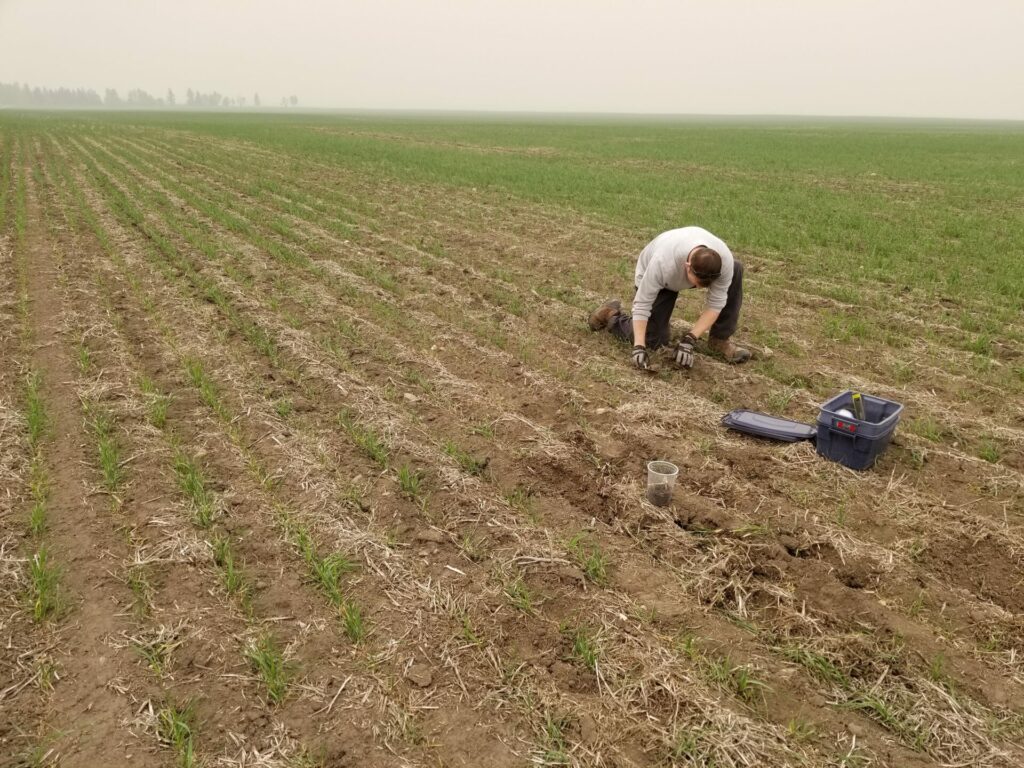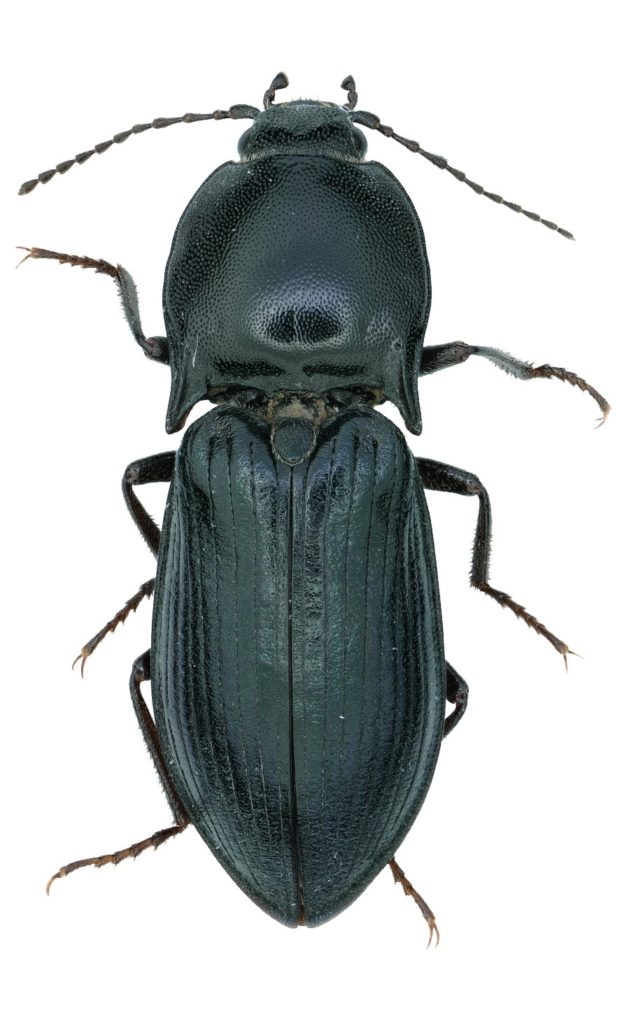There are four primary pest species of wireworms on the Canadian Prairies, including Hypnoidus bicolor and the prairie grain wireworm (Selatosomus aeripennis destructor). More information about the primary wireworm pest species can be found in the Guide to Pest Wireworms in Canadian Prairie Field Crop Production (also available in French).
Wireworms are the larval stage of click beetles from the family Elateridae. Click beetles, the adult stage, do not cause damage to crops.

Similar to cutworms, bare patches in a field can be an early and obvious sign of wireworm infestation in the spring. Patchy crop emergence, as pictured above, results when wireworms consume germinating seeds or feed on the roots and stems of young seedlings, as pictured below.

Wireworms live in the soil, where it can take 4 or more years to complete larval development. In the soil, wireworms feed on germinating seeds and the roots of a wide variety of prairie field crops including cereals, pulses, oilseeds, and vegetables including potato and carrots. Damage to root vegetables can result in unmarketable produce.

It is common to use baits to scout for wireworms. Baits, consisting of cut potato pieces or soaked mixtures of oatmeal and other seeds, should be buried 5-10 cm deep at 10 or more locations in unplanted fields in the spring to determine if wireworms are present before planting. Leave the baits for 2 weeks and then dig up the baits to look for wireworms. In fields with patchy seedling emergence, soil sampling can be used to look for wireworm larvae and to determine if the damage is being caused by wireworms or by another pest (like cutworms).
More information about wireworm biology, monitoring and management is available from Manitoba Agriculture, from Alberta Agriculture and Irrigation and in Field Crops and Forage Pests and their Natural Enemies in Western Canada (also available in French).


